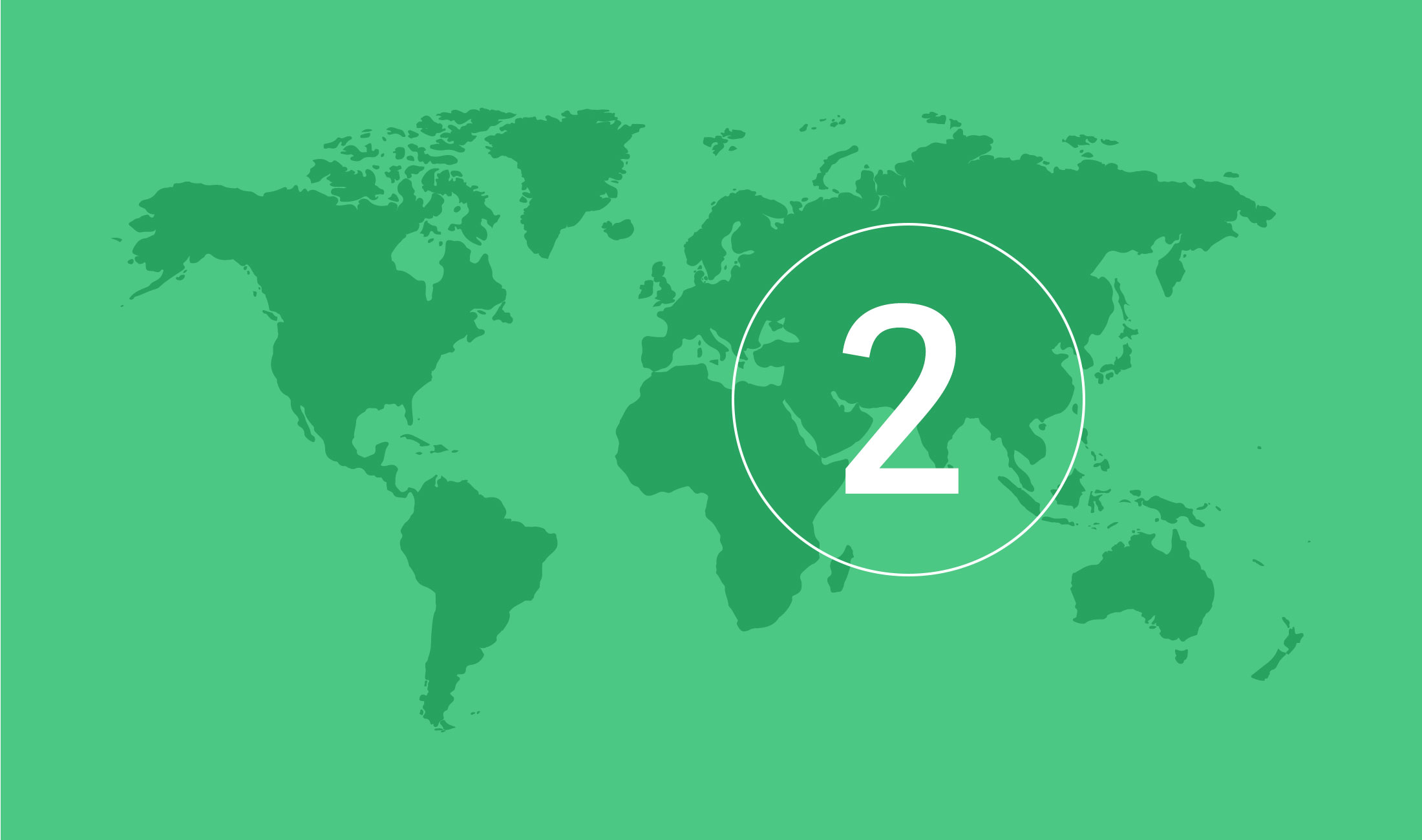
United Arab Emirates
Category
2
- 0
- 1
- 2
- 3
- 4
- 5
- 6
- 7
| Risk type | Short | Long |
|---|---|---|
| Sovereign |

|

|
| Public |

|

|
| Bank |

|

|
| Corporate |

|

|
The icons indicate EKN's risk assessment.

No policy established

Normal risk assessment

Restrictive risk assessment

Normally off cover

OECD or EU countries
Country risk analysis
Country Risk Analysis of the United Arab Emirates
February 2025
Developed economy
The United Arab Emirates (UAE) is one of the most developed economies in the Middle East. Collectively, the emirates possess substantial oil reserves, accounting for around six per cent of the world’s known oil reserves and approximately three per cent of global natural gas reserves. The oil and gas sector is a dominant source of growth and accounts for just under 30 per cent of the UAE’s GDP.
Nevertheless, this makes it one of the least oil-dependent countries in the Gulf. Although oil remains the most important source of income for the federal government, sectors such as tourism, business services and logistics have grown in significance in recent years.
The federal government’s areas of responsibility are limited but include, among other things, monetary policy and the banking system. This means, for example, that transfer and conversion risks are assumed to be similar for buyers regardless of which emirate they are based in. In line with other Gulf countries, major initiatives have been undertaken over the past several years to diversify the economy and prepare it for a future with lower demand for fossil fuels.
The emirate’s president, Sheikh Mohammed bin Zayed Al Nahyan, is expected to uphold the current policy direction, which prioritises economic diversification through large-scale public investments, combined with improvements to the business environment and social rights, with the aim of attracting investment and human capital from abroad.
Despite the UAE’s historical and strategic relationship with the United States, deeper ties with other countries, such as India and China, will continue to be developed to support the country’s security and commercial interests. The country’s accession to the BRICS cooperation in early 2024, alongside several other nations, should be seen in this light.
Thanks to substantial oil-based financial assets, the country’s public finances rest on a solid foundation. Public debt is low, at just over 30 per cent of GDP, and is expected to decline over the coming years. According to the IMF, the budget balance is projected to average 4.2 per cent of GDP over the next five-year period.
The country’s external position is strong, and its status as a net creditor is expected to remain intact. Although external debt has risen in recent years, it currently amounts to a manageable 83 per cent of GDP. Other indicators — such as debt or interest payments relative to exports — also remain at reassuring levels.
The foreign currency reserve is approximately twice the size of total short-term external debt, which limits liquidity risk. In addition to the currency reserve, there are extensive assets in sovereign oil funds, built up over decades of current account surpluses. The wealth fund of the Emirate of Abu Dhabi is among the largest in the world.
Continued high revenues despite production limits
Oil production and the associated revenues remained lower throughout 2024 than previously assumed, as a result of joint decisions within OPEC+ to limit output for the entire year. The lower-than-planned oil revenues have, at the same time, facilitated the introduction of an increased corporate tax rate of 15 per cent (up from the previous nine per cent).
The change in corporate tax supports diversification away from oil income and at the same time aligns the UAE with the OECD’s minimum requirements. Regional competitors have also moved ahead with the implementation of VAT and corporate taxation.
The IMF forecasts annual growth of just over 5 per cent between 2025 and 2026, as oil production limits begin to be phased out from 2025 onwards. There are ambitious investment plans aimed at economic diversification, including through the reform programme UAE Energy Strategy 2050. The UAE is the region’s largest recipient of foreign direct investment, and investors are attracted by liberal trade and investment conditions, drawing capital flows from both within and outside the region.
At the same time, the country is promoting its own regional influence, primarily through its financial capacity – for example, through the purchase of a plot of land in Egypt for USD 35 billion in February 2024, where the UAE plans to invest in the expansion of a tourist resort. In future, the emirate is expected to face increasing competition from neighbouring countries, such as Saudi Arabia and Qatar, in attracting investors. This competitive situation is expected to improve the business climate in all countries over the coming decade.
The long-term outlook for the UAE is relatively favourable, with few threats to political and economic stability. Improved relations with neighbouring countries Qatar and Israel are expected to contribute to greater regional stability. For example, an agreement was signed with Israel on free trade in 2022, following the normalisation of diplomatic relations in 2020.
The risk landscape in both the short and long term is dominated by the security situation in the region and, in particular, the relationship between Iran and Israel. A continuation of military hostilities between the two countries in 2025, leading to further escalation, could have consequences for oil production in Abu Dhabi and for Dubai’s role as a tourist destination and logistics hub.
In terms of physical climate risks and natural disasters, the UAE faces, on the one hand, a lower risk of floods, storms and landslides than the average for both OECD high-income countries and lower-middle-income countries. On the other hand, risks related to rising sea levels, water scarcity and wildfires are considered higher in relation to both comparison groups.
The United Arab Emirates, with its naturally limited access to freshwater, meets virtually all its needs through desalination plants along the coasts. In addition, the emirate consists mainly of desert landscapes, with forests accounting for less than 0.1 per cent of the total area, which limits the potential consequences of wildfires.
Business environment
In Transparency International’s Corruption Index, the UAE ranks above several EU countries, at 26th place out of 180 countries. The World Bank’s Governance Indicators (WBGI), which include various measures of the quality of institutions and the regulatory environment, place the country above the regional standard and in line with the OECD high-income average.
However, the judiciary in the United Arab Emirates is not politically independent, and there are deficiencies in its effectiveness. Certain areas, such as investor protection and the ability to enforce rights under contracts, lag behind. The cost of the recovery process is high and time-consuming, even in regional comparison. In response to these shortcomings, the UAE introduced a number of changes to its bankruptcy legislation in 2021, including strengthened creditor protection and measures to accelerate and simplify the enforcement of judgements.
The UAE has the most liquid and developed currency markets among the Gulf countries. Since 1973, the exchange rate has been pegged to the US dollar. The fixed exchange rate against the US dollar is expected to remain, as it is an important anchor for economic stability and creates stable conditions for business and export. There are no restrictions on payments and transfers for international transactions. The Emirati dirham may be considered by EKN for local currency transactions.
The country is one of the most bank-dense in the region. The banking sector stands on solid ground, with profitable and well-capitalised banks. The larger banks in Abu Dhabi are particularly notable in this regard. The recovery from the pandemic has been strong, supported by a generally favourable economic climate due to high oil prices.
The main risks to the banking sector, in the form of new property bubbles and prolonged low oil prices, are offset by a stable funding base, large capital buffers, and stricter banking regulations in recent years. In February 2024, the UAE was removed from the so-called ”grey list” of the FATF (Financial Action Task Force), a global organisation that combats money laundering and the financing of terrorism. This will reduce compliance requirements for foreign banks with ties to counterparties in the country and help facilitate trade and investment.
EKN’s business assessment takes into account the risk of negative impact on human rights. EKN focuses on the impact that the activity in which the exported goods are to be used may have. In this context, issues such as working conditions, child and forced labour, excessive use of force by security forces, indigenous peoples’ rights and land rights are of significant importance.
Compared with the group of OECD high-income countries, the UAE generally has a higher human rights risk profile, but overall a similar or lower risk profile compared to lower-middle-income countries. However, the United Arab Emirates diverges significantly in the sub-index for freedom of association and collective bargaining compared with both comparison groups, primarily due to limited formal support for workers’ rights.
EKN’s policy
EKN classifies the UAE in country risk category 2 out of 7. Normal risk assessment applies to all buyer categories. This means that there are no predetermined restrictions on the issuance of guarantees, and that transactions are assessed on their own merits without special requirements or conditions.
EKN’s commitment and experience
EKN’s guarantees include export transactions to private buyers in sectors such as transport, infrastructure and paper. Between 2020 and 2024, EKN issued guarantees for 275 transactions, totalling SEK 10.8 billion, for Swedish companies exporting to the UAE. The transport sector accounted for the largest share by value.
Payment experience is mixed, and the oil price decline in 2014 led to delays and losses. EKN experienced increased payment problems among companies in the UAE after 2016 due to weaker market conditions. A strong post-pandemic recovery, high oil prices and positive market prospects have improved the payment experience in recent times, although many earlier claims remain outstanding to a significant extent.
More for companies that want to export to United Arab Emirates

EKN's guarantees
EKN's guarantees reduce the risk of payment defaults and help banks support businesses. Which guarantee suits your needs?
EKN's guarantees
Guarantee guide
Are you unsure which guarantee is the best fit for your specific transaction? Try our guarantee guide.
Guarantee guide